


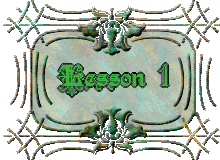

The History of Herbal Pharmacy (Ancient Mythology, Papyrus Ebers, Hippocrates, The Dark Ages, Herbal Pharmacy Becomes a Science); The History of American Herbal Pharmacy (The 17th Century, The 18th Century, The 19th Century, The 20th Century, and an Overall Chronology of Herbal Pharmacy); The Ethics of Herbal Pharmacy (Principles of Pharmaceutical Ethics, The Duties of the Herbal Pharmacist in Relation to Serving the General Public, to the Physician, to Each Other, and to the Profession as a Whole); Minimum Requirements Regarding Proprietary Remedies (Prescription Imitations or Concealment of Proprietary Characteristics, Methods of Marketing, Alcohol Content, Content of Habit-Forming Narcotic Drugs, Remedies for Use by Children, Activity of the Preparation and Cautions Against Misuse, Immoral or Illegal Purposes, Incurable and Contagious Diseases, Conformity to FDA Regulations, and Advertising That Does Not Accompany the Package); The Overall Scope of Herbal Pharmacy (Theoretical Herbal Pharmacy, Practical Herbal Pharmacy, Opportunities in Herbal Pharmacy, and How to Become an Herbal Pharmacist).



The Literature of Herbal Pharmacy (Development of a National Literature of Herbal Pharmacy); Herbal Pharmacopoeias and Other Books on Herbal Pharmacy; The Monograph and Nomenclature of the Herbal Pharmacopoeia and Dispensatory (Natural Order, Plant Family, Botanical Name [Genus and Species], Tribe, Etymology, Botanical Origin [Source or Definition], Sexual System, English Common Names, Synonyns, Botanical Characteristics [Description], Histological Characteristics [Macroscopical and Microscopical], History and Folklore, Habitat, Production and Commerce, Wildcrafting [Collection and Preservation], Official Part Used, Chemical Constituents, Nutritional Components, Medical Properties, Physiological Action, Therapeutics [Medicinal Uses], Specific and Non-Specific Indications, Flower Essence Qualities, Dosage and Administration, Toxicology [Toxicity] and Contraindications, Adulterants, Compatible and Incompatible Combinations, Synergists, Grade of Temperament, Astrological Affinity [Medical Astrology], Related Species and Products, Tests for Identity and Purity [Purity Rubric], Biological or Proximate Assays, and Official Herbal Pharmaceutical Preparations).



The Basic Laws that Regulate Herbal Pharmacy (Composite Herbal Pharmacy Law, Location and Declaration of Policy and Purpose, Definitions, Administration, Qualifications for Registration, Renewal of Certificates, Reciprocal Registration, Minimum Equipment Requirements, Permits, Supervision and Management by Licensed and Registered Herbal Pharmacists, Prescription Files, Qualifications of Manufacturing Personnel, Exemptions that Favor Practitioners and Patent or Proprietary Medicines, Non-Pharmacy Permit Control, Forms and Fees, Renewal and Revocation, Right of Appeal, Penalties, Relief by Injunction, Severability Clause, and Repeal of Inconsistencies); Federal Food, Drug and Cosmetic Act (Definitions, Adulterated Plant Drugs and Devices, Misbranded Plant Drugs and Devices, New Plant Drugs, Imports and Exports, and Enforcement of the Act); Patents and Proprietary Medicines (Patents, Proprietary Medicines, Trademarks and Trade Names); Labeling Regulations (Warning Statements for Plant Drug Labels, Regulations Regarding Dangerous Plant Drugs, Additional Label Information, and Suggested Label Samples); The Professional Herbal Pharmacist (Establishing a Professional Reputation, and Types of Professional Herbal Pharmacists); Essential Elements of an Herbal Pharmacy or Herbarium (Plant Drug Stock and Their Storage Containers, Minimum Equipment Requirements, Special Equipment, Herbal Products and Cold Storage, The Herbal Pharmacy Labels and Labeling Procedures, Files, Distilled Water Supplies, and Type of Sinks Employed).



Description and Characteristics of Extemporaneous Herbal Pharmacy; The Theory of Eclectic Specific Medication; Classification of Specific Diagnosis and Specific Medication (Preventative Medicine, Pathological Diagnosis and Medication, and Chemical and Physical Specific Medication); Specific Medicines (Description, History, Characteristics, Preparation and Uses); Description, Classification and Nomenclature of Homeopathic Pharmacy; Description and Derivation of Plant Drugs and Medicinal Substances; The Unit of Medicinal Strength; General Principles for the Preparation of Homeopathic Plant Drugs; Homeopathic Tinctures (Description and Preparation); Dilutions or Liquid Attenuations; Dilutions from Triturations; Homeopathic Triturations (Description and Preparation); Forms of Vehicles for Homeopathic Prescriptions.

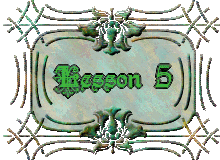

Mathematical Principles (Basic Rules and Definitions, Common and Decimal Fractions, Exponents, Powers and Roots, Logarithms, The Slide Rule, and Significant Figures); Pharmaceutical Problems (Addition, Subtraction, Multiplication, Division, Conversion Problems, Ratio and Proportion, Percentages, Stock Solutions, Calculation of Doses, Alligation, Pharmaceutical Chemistry Problems, Gravimetric Analysis, Volumetric Analysis, and Checking Results); Specific Gravity (Definition, Calculations, Estimation of the Specific Gravity of Liquids, and Hydrometers); Estimation of the Specific Gravity of Solids (Solids Insoluble in or Heavier than Water, Solids Soluble in or Heavier than Water, Solids Insoluble in or Lighter than Water, and Solids Soluble in or Lighter than Water); Practical Applications of Specific Gravity; Adjustment of Specific Gravity and Percentages; Specific Volume.

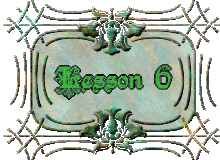

The Measurement of Heat (Thermometric Scales, and Basic Rules for Converting Temperature Scales); Types of Thermometers for Home Use (Clinical Thermometers, and Maximum or Minimum Thermometers); Taking the Body Temperature (Normal Temperatures, and Temperature Comparisons); Manufacture and Varieties of Thermometers; Reading the Thermometer; Correction; "Certificate" and "Certified"; Care and Handling of Thermometers; Melting and Congealing Points; Electrical Devices; The Generation of Heat (Combustion, Solid and Liquid Fuels, Gaseous Fuels, and Surface Combustion); Apparatus Employed for Generating and Applying Heat (Apparatus That Utilize Gas, Electricity or Steam, Transfer of Heat Energy by Other Means, and Blowpipes); The Regulation of Heat (Apparatus Employed for Regulating Heat, and Temperature-Regulating Devices); Sand-Liquid or Water- or Steam-Baths; Valuation of Heat.



The Changes of State in Matter (General, Fusion, Ebullition, Vapor Pressure and Sublimation); Chemical Changes Caused by Heat (Calcination, Carbonization, Deflagration, Fusion, Ignition, Incineration and Torrefaction); Crucible Vaporization (Evaporation, Tension of Vapors, and Humidity); Evaporation of Liquids by Boiling; Determination of Boiling Points; Evaporation Below the Boiling Point; Evaporation by Direct Heat; Evaporation to a Definite Volume; Economical Surface Evaporation; Spontaneous Evaporation; Evaporating Apparatus (Proper Shape of Vessels [Dishes] for Evaporating Liquids, Use of Stirrers, Fume-Closets and Hoods, Grommets and Vacuum Apparatus).



Desiccation and Dehydration; Objectives of Desiccating Medicinal Substances (To Aid in Their Preservation, To "Fix" Their Constituents, To Reduce Bulk and Weight, and to Facilitate Subsequent Comminution); Loss in Drying Medicinal Substances; Moisture Content in Powdered Plant Drugs; Desiccation of Plant Drugs for Home Use; Correlation Between Color and Medicinal Potency; Proper Labeling; Drying Plant Drugs (Indoors, Outdoors, or by Artificial Heat); Drying Specific Plant Parts (Barks, Berries, Buds, Bulbs, Corms, Excrescences, Flowers, Fruits, Gums and Resins, Herbs [Whole Plants], Leaves, Rhizomes [Root-Stalks] and Roots, Seeds, Sprouts, Stalks, Stems, Tubers, Twigs and Woods); Sterilization (Factors That Necessitate the Use of Sterilization); Sterilization Techniques (Direct Flame, Dry Heat, Steam Under Pressure, Moist Heat at 100 Degrees C. [Free-Flowing Steam or Boiling Water], Moist Heat at Low Temperatures [Inspissation], and Bacteriological Filtration); Care of Filter Candles; Oil Bath and Aseptic Manipulation; Sterility Tests for Liquids (Opening Containers, and Removing and Culturing Contents); Sterility Tests for Solids (Opening Packages and Containers); Controls.



Definition and Primary Objective of Comminution; Varieties of Comminution and Their Apparatus (Cutting, Slicing and Chopping, Rasping or Grating, Contusion (Bruising), and Trituration); Separation and Classification of Powders (Sifting, Levigation, Elutriation, Trochiscation, Pulverization by Intervention, Grinding and Pulverizing); Hand Mills (General Rules for Operating Hand Mills and Small Motor-Driven Mills); Large-Scale Comminution (Hammer Mills, Buhrstone Mills, Roller Mills and Chaser Mills); Standards for Fineness of Powders.

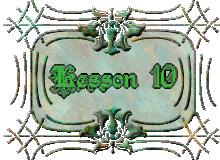

Solution (Definition and Types of Solutions); Solutions of Solids in Liquids (Solubility, Solution by Circulatory Diffusion, The Effect of Heat and Other Substances Upon Solubility, Estimation of Solubility, Solvents Used in Herbal Pharmacy, Modes of Effecting Solution of Solids at the Prescription Counter, Determination of Solubility, and Methods of Expressing Solubility); Solutions of Liquids in Liquids; Solutions of Gases in Liquids; The Effect of Molecular Structure on Solubility; Saturated, Percentage and Colloidal Solutions; Solvents or Menstrua; Sterilization of Solutions; Simple and Chemical Solutions; Conditions and Method of Solution; Super-saturated Solution; Volume Changes in Solution; Density of Solutions; Solubility of Substances in Saturated and Super-saturated Solutions; Reduction in Temperature Caused by Rapid Solution; Definition of Colligative Properties of Solutions; Osmotic Pressure (Diffusion in Liquids, Osmosis, Osmotic Pressure of Non-Electrolytes, Osmotic Pressure of Electrolytes, and Biological Aspects of Osmotic Pressure); Vapor Pressure-Lowering; Boiling Point Elevation; Freezing-Point Depression; Practical Applications of Colligative Properties; Isotonic Solutions (Definition, Desirability of Isotonic Solutions, Choice of Colligative Property for Determining Tonicity, Adjusting Substances, and Procedures for Preparation of Isotonic Solutions); Calculations Based Upon Known Freezing-Point Depressions (Calculations Using Ionization Percentages).



Lotion (Displacement or Continuous Washing, and Apparatus Used in Lotion); Decantation (The Syphon or Siphon, Syphons for Special Purposes, and Apparatus Used in Decantation); Colation or Straining (Apparatus Used in Colation, and Colation in Smaller Operations); Filtration; Apparatus Used in Filtration (Paper Filters and Methods of Folding Filtering Paper); Various Other Filtering Media (Cotton Filters, Asbestos and Glass Wool Filters, Stoneware Filters, Bacterial Filters, Sand Filters, Alundum Filters, Sintered Glass Filters, and Funnels); Filtration of Volatile Liquids; Filtration Through Absorbent Powder; Hot Filtration; Rapid Filtration; Continuous Filtration (Buchner Funnel); Vacuum Filtration (Filter Pumps and the Gooch Crucible); Filtration Under Pressure.

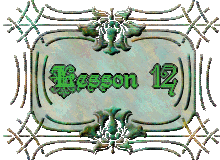

Definition and Methods of Evaporation; Definition and Methods of Distillation; Theory of Distillation of Liquids (Liquids Insoluble in Each Other, Liquids Miscible in All Proportions, and Liquids Miscible in Certain Proportions); Simple Distillation (Condensation); Apparatus Employed in Distillation (Stills for Distillation of Water, Retort Stills, Condensers, Distilling Appliances, and Registration on Stills); Methods of Distillation (Flask Distillation, Vacuum Distillation, Steam Distillation, Fractional Distillation, Molecular Distillation, Reflux Distillation, Compression Distillation and Destructive Distillation); Sublimation (Distillation of Volatile Solids, Cake Sublimates, Powder Sublimates and Crystalline Sublimates).

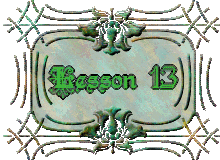

Definition and Principal Methods of Extraction; Maceration (Definition and Process); Expression (Definition, Spiral Twist Press, Screw Press, Roller Press, Lever Press, Hydrostatic or Hydraulic Press, Filter Presses, and Operation of the Press); Percolation or Displacement (Definition and History, Operating Principles, Apparatus, and Shape of the Percolator); The Percolation Process (Comminution, Choice of Menstrua and Absorbed Menstruum, Moistening and Packing of the Powdered Plant Drug, Adding the Menstruum, Previous Maceration, The Percolation and Controlling the Flow, Management and Support of Perculators and the Percolation Process, Continuous Percolation, Completion of the Percolation Process, and Receiving Bottles); Fractional Percolation and Re-Percolation; Special or Modified Percolators (Well Tube Percolator and Double Tube Percolator); Large-Scale Percolation (Lloyd Extractor, Pressure Percolator, and Hot Extraction Percolation).



Definition and Objects of Precipitation; Methods of Effecting Precipitation; Apparatus Used in Precipitation; Manner of Conducting the Process (Operation); The Production of Heavy and Light Precipitates; Collecting and Washing Precipitates; Definition and Purpose of Crystallization; Methods of Crystallization (Gaseous to Crystalline State, Liquid to Crystalline State, and Solid to Crystalline State); Amorphous and Crystalline Substances; Crystals and Crystal Structures; Crystal Systems in Crystallography (Monometric, Cubic or Regular System, Dimetric, Tetragonal or Quadratic System, Trimetric or Rhombic System, Hexagonal or Rhombohedric System, Monoclinic or Oblique Prismatic System, and Triclinic or Anorthic System); Determination of Crystalline Form; Cleavage; Isomorphism; Measurement of Crystals; Objects of Crystallization; Interstitial Water; Efflorescence and Deliquescence; Collection, Draining, Washing and Drying of Crystals; Intermediate Crystallization; Definition and Process of Granulation; Apparatus Employed in Granulation; Granular Effervescent Salts; Definition and Purpose of Exsiccation; Apparatus Used in Exsiccation; Crystalloids and Colloids; Dispersions; Colloidal Systems; The Tyndall Effect; The Ultra Microscope and Brownian Movement; Surface Area and Absorption; Electrical Charge; Reversible and Irreversible Colloids; Coagulation and Peptization; Protective Action of Colloids; Definition and Purpose of Dialysis; Dialysis and Ultrafiltration; Preparation of Colloids and Colloidal Solutions; Condensation and Dispersion Methods.

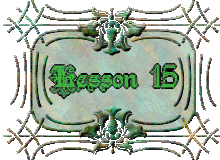

Definition and Methods of Clarification (Application of Heat, Use of Albumen, Gelatin, Milk and Paper Pulp, Fermentation, and Subsidence Through Long-Standing); Definition and Methods of Decolorization (Animal Wood and Activated Charcoal and Clays); Centrifugalization; Centrifugal Apparatus; Applications of Centrifuges (Laboratory Centrifuges, Large Centrifuges, The Super Centrifuge, and Pharmacopoeial Testing); Processes Requiring the Separation of Immiscible Liquids; Apparatus Employed in the Separation of Immiscible Liquids (Pipettes, Glass Syringes, Separatory Funnels, and the Florentine Receiver).
